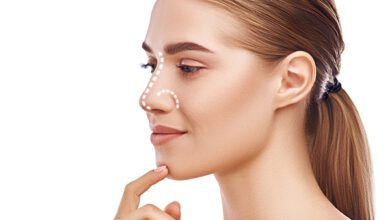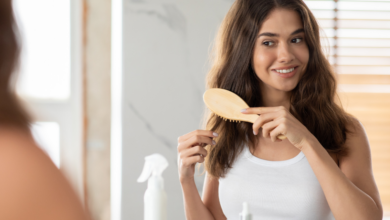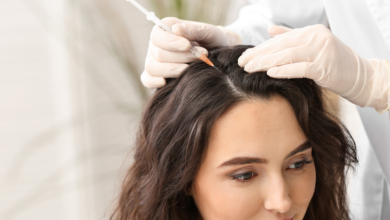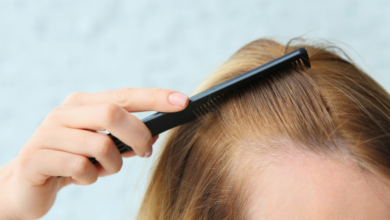
In “Lustrous Locks Await: Your Comprehensive Recovery Guide Post-Transplant,” this article serves as a comprehensive guide to assist you in the recovery process after undergoing a hair transplant procedure. You will discover valuable information and expert advice on how to effectively care for your newly transplanted hair, ensuring optimal growth and achieving those lustrous locks you’ve been longing for. From post-operative care tips to lifestyle adjustments, this guide aims to equip you with everything you need to know to make your hair transplant journey a successful and rewarding one.
Pre-Transplant Preparation
Consultation and evaluation
Before undergoing a hair transplant, it is essential to schedule a consultation with a qualified hair transplant specialist. During this consultation, the specialist will evaluate your hair loss pattern, overall health, and suitability for the procedure. You will have the opportunity to discuss your expectations, desired outcomes, and any concerns you may have. The specialist will also explain the different transplant techniques available and recommend the most suitable one for you.
Medical tests and examinations
To ensure your safety and the success of the transplant, various medical tests and examinations may be conducted before the procedure. These tests may include blood work, scalp analysis, and a thorough examination of your hair and scalp. These tests provide valuable information to the transplant team and help them determine the best course of action for your specific case.
Discussion about expectations and risks
During the consultation phase, the hair transplant specialist will discuss the expected outcomes of the procedure and any potential risks or complications. It is crucial to have a clear understanding of what can be achieved through the transplant and to have realistic expectations. By discussing the risks and complications, you will be fully informed and able to make an educated decision regarding the procedure.
Preparation of donor area
In preparation for the transplant, the donor area, typically the back or sides of the scalp where hair follicles are abundant, will be trimmed short. This allows the transplant team to extract the donor hair more easily and efficiently during the procedure. Trimming the donor area ensures a seamless integration of the transplanted hair with your existing hair and facilitates the healing process post-transplant.
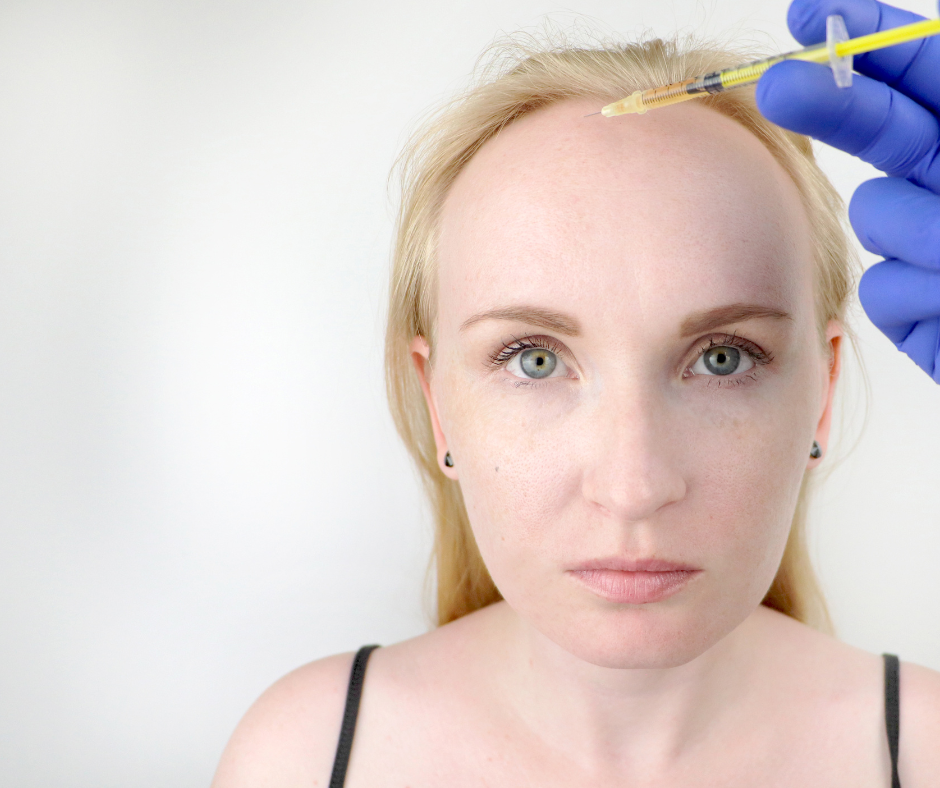
Day of Transplant
Anesthesia administration
On the day of the transplant, anesthesia will be administered to ensure a comfortable experience. Local anesthesia is typically used, which numbs only the treatment area, allowing you to remain awake during the procedure. This type of anesthesia minimizes any potential risks associated with general anesthesia.
Donor area extraction
The transplantation process begins with the extraction of hair follicles from the donor area. The specialist will use either follicular unit extraction (FUE) or follicular unit transplantation (FUT) techniques, depending on your specific needs. FUE involves the extraction of individual hair follicles, while FUT involves removing a strip of scalp containing hair follicles. Both techniques allow for the careful extraction of healthy hair follicles for transplantation.
Recipient area preparation
Once the hair follicles have been extracted, the recipient area, where the transplanted hair will be placed, will be prepared. Tiny incisions will be made in the recipient area, ensuring precise placement of the hair follicles. The size and angle of these incisions play a crucial role in achieving natural-looking results.
Transplantation process
The hair follicles extracted from the donor area will now be carefully transplanted into the recipient area. The transplant team will meticulously place each individual follicle in the designated incisions, ensuring proper alignment and distribution. This delicate process requires skill and precision to achieve optimal results.
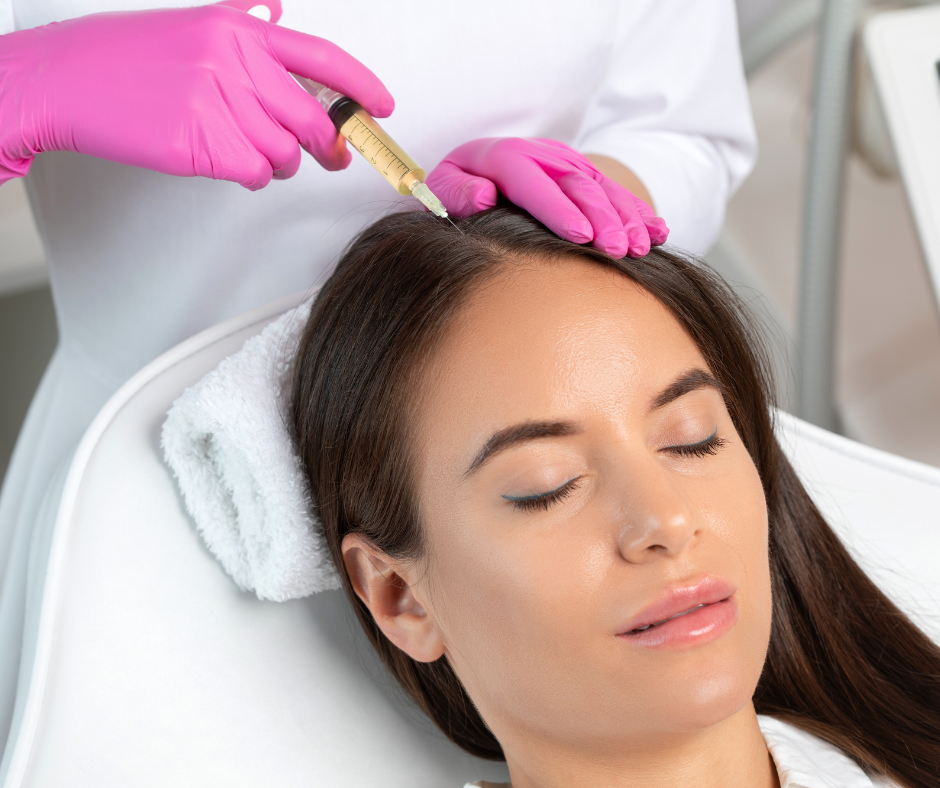
Immediate Post-Transplant Care
Graft protection
After the transplant, it is crucial to protect the newly transplanted grafts to ensure their survival and successful growth. You will receive specific guidelines on how to protect the grafts, such as avoiding excessive manipulation or applying pressure to the treated area. It is essential to follow these instructions carefully to minimize the risk of damaging the grafts.
Applying a protective dressing
To safeguard the transplanted area, a protective dressing may be applied immediately after the procedure. This dressing not only provides physical protection but also helps maintain the necessary moisture balance in the scalp. The dressing should be left in place for the recommended duration, as advised by the transplant team.
Postoperative medication
To aid in the healing process and reduce the risk of infection, your transplant specialist may prescribe postoperative medication. These medications may include antibiotics, pain relievers, and anti-inflammatory drugs. It is crucial to follow the prescribed medication schedule and dosage to optimize recovery and minimize discomfort.
Guidelines for the first few days
During the initial days following the transplant, you will receive specific guidelines on how to care for your scalp and manage any discomfort or side effects. These guidelines may include instructions on washing the transplanted area, avoiding exposure to direct sunlight, refraining from strenuous activities, and avoiding the use of certain hair care products. Following these guidelines diligently is vital for the long-term success of your hair transplant.
Managing Discomfort and Side Effects
Pain management
It is common to experience some discomfort or mild pain following a hair transplant procedure. Your transplant specialist may prescribe pain medication to help manage any pain or discomfort. It is essential to take the prescribed medication as directed and report any severe or prolonged pain to your specialist promptly.
Swelling and bruising
Swelling and bruising in the scalp and around the eyes are common side effects of a hair transplant. These side effects usually subside within a few days or weeks. Applying cold compresses to the affected areas and keeping your head elevated can help reduce swelling. It is essential to follow your specialist’s instructions on managing these side effects and report any unusual or persistent swelling or bruising.
Itching and numbness
Itchy scalp and numbness in the treated areas are also common after a hair transplant. It is important to avoid scratching or forcefully rubbing the scalp to prevent damaging the grafts. Your specialist may recommend gentle tapping or applying a prescribed topical solution to alleviate itching. Numbness is usually temporary and resolves over time as the scalp heals.
Avoiding trauma to the scalp
While it is important to maintain regular activities, it is crucial to avoid any activities that may traumatize or injure the scalp. This includes avoiding heavy exercise, sports that involve physical contact or impact, and wearing tight-fitting headwear. Trauma to the scalp can disrupt the healing process and affect the success of your hair transplant.
Washing and Drying Techniques
When to begin washing the transplanted area
Your transplant specialist will provide specific instructions on when and how to start washing the transplanted area. In most cases, you will be advised to begin washing the transplanted area within the first few days after the procedure. It is essential to follow these instructions carefully to ensure proper hygiene and promote the healing process.
Techniques for washing the scalp
When washing the transplanted area, it is important to use gentle techniques to avoid dislodging or damaging the grafts. Your specialist may recommend using a mild shampoo and gently massaging the scalp with your fingertips. It is important to avoid excessive pressure, rubbing, or scratching during the washing process.
Choosing the right shampoo
Selecting the right shampoo is crucial to maintain the health of your transplanted hair and promote overall scalp health. Your transplant specialist may recommend a specific shampoo or provide guidelines on choosing a suitable one. It is important to avoid shampoos with harsh chemicals or ingredients that may irritate the scalp or strip away natural oils.
Drying methods and precautions
After washing the transplanted area, it is important to dry the scalp gently. Patting the scalp with a soft towel or using a low heat setting on a hairdryer can help to minimize any potential damage or dislodgment of the grafts. It is important to avoid using excessive heat, vigorously rubbing the scalp, or towel drying with excessive force.
Styling and Grooming Tips
Avoiding styling products initially
During the initial phase of recovery, it is important to avoid using styling products such as gels, mousses, or hairsprays. These products may contain chemicals or ingredients that can irritate the scalp or interfere with the healing process. It is advisable to allow your transplanted hair to settle and stabilize before introducing styling products.
Gradually reintroducing styling techniques
Once your hair has fully grown and stabilized, you can gradually reintroduce styling techniques. Your transplant specialist may provide guidelines or recommendations on the appropriate timing and methods for styling your hair. It is important to be gentle and avoid excessive tension or manipulation to avoid damaging the transplanted hair or scalp.
Choosing suitable hair care products
Selecting suitable hair care products is essential to maintain the health and appearance of your transplanted hair. Your transplant specialist may recommend specific products or provide guidelines on choosing appropriate ones. It is important to opt for gentle, sulfate-free shampoos, conditioners, and styling products that are suitable for your hair type and scalp condition.
How to handle different hair lengths
As your transplanted hair grows, you may encounter challenges related to managing different hair lengths. It is important to consult with your transplant specialist on how to properly trim or style your hair during this transition phase. They can provide guidance on achieving a natural and even look while allowing your transplanted hair to blend seamlessly with your existing hair.

Protecting and Maintaining the Transplants
Avoiding sun exposure and UV rays
After a hair transplant, it is crucial to protect your scalp and transplanted hair from direct sun exposure and harmful UV rays. Prolonged sun exposure can cause damage to the scalp and negatively impact the growth and appearance of the transplanted hair. Wearing hats, using sunscreen specifically designed for the scalp, and seeking shade when outdoors are effective measures to prevent sun damage.
Using hats or head coverings
In addition to protecting your scalp from the sun, wearing hats or head coverings can provide an added layer of protection during the initial healing phase. It can prevent accidental trauma, dust, and dirt from coming into contact with the transplanted area. However, it is important to choose hats or head coverings that are not too tight or restrictive to allow the scalp to breathe.
Protective measures during physical activities
Engaging in physical activities, especially those that may involve impacts or excessive sweating, requires additional protective measures for your transplanted hair. Wearing protective headgear, such as a sweatband or headband, can help reduce friction and prevent sweat from coming into direct contact with the transplanted area. Your transplant specialist can provide specific recommendations based on the activities you participate in.
Regular scalp massages and exercises
To promote blood circulation and optimal growth of the transplanted hair, regular scalp massages and exercises can be beneficial. Gently massaging the scalp using your fingertips stimulates the hair follicles and encourages the flow of nutrients to the transplanted hair. Your transplant specialist can provide specific instructions on the appropriate massage techniques and exercises to follow.
Promoting Hair Growth
Importance of a balanced diet
Maintaining a balanced and nutritious diet is essential for promoting healthy hair growth, including the transplanted hair. Foods rich in vitamins, minerals, and proteins, such as fruits, vegetables, lean meats, and whole grains, provide the necessary building blocks for strong and vibrant hair. Consulting with a dietitian or nutritionist can help you optimize your diet for hair health.
Supplements and vitamins for hair health
In addition to a balanced diet, certain supplements and vitamins may be beneficial for promoting hair growth and maintaining the health of your transplanted hair. Your transplant specialist or healthcare provider may recommend specific supplements, such as biotin, vitamin D, or omega-3 fatty acids. It is important to discuss with them the appropriate dosage and potential interactions with any other medications you may be taking.
Stress reduction techniques
Stress can have a negative impact on hair growth, including the transplanted hair. Practicing stress reduction techniques, such as deep breathing exercises, meditation, or regular physical activity, can help promote overall wellbeing and hair health. Finding healthy ways to manage stress can contribute to the success of your hair transplant and the overall appearance of your hair.
Understanding hair growth phases
Understanding the different phases of the hair growth cycle is important for realistic expectations after a hair transplant. The transplanted hair will undergo a temporary shedding phase, known as “shock loss,” before entering a growth phase. It is important to be patient and allow sufficient time for the transplanted hair to progress through these phases. Your transplant specialist can provide guidance on what to expect during each phase of the hair growth cycle.
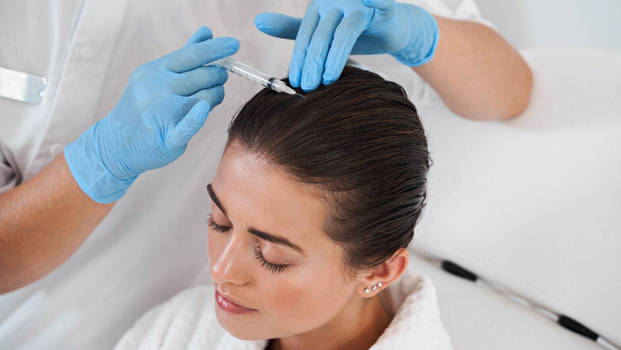
Regular Follow-up and Maintenance
Post-transplant evaluations
Regular follow-up visits with your transplant specialist are essential to monitor the progress of your hair transplant and address any concerns or questions you may have. These evaluations allow the specialist to assess the growth and density of the transplanted hair and make any necessary adjustments or recommendations for further maintenance.
Monitoring graft growth
Monitoring the growth of the transplanted grafts is crucial to ensure their long-term success. Your transplant specialist will closely monitor the graft growth during the post-transplant evaluations. They will assess factors such as the overall density, coverage, and naturalness of the transplanted hair. Any concerns or issues with graft growth can be addressed promptly during these evaluations.
Possible touch-up procedures
In some cases, additional touch-up procedures may be necessary to achieve the desired density or coverage after the initial transplant. Your transplant specialist will evaluate the results of the initial transplant and discuss the possibility of any touch-up procedures if needed. It is important to maintain open communication with your specialist to achieve the optimal outcome.
Long-term hair care regimen
Maintaining a long-term hair care regimen is crucial for preserving the health and appearance of your transplanted hair. Your transplant specialist will provide personalized recommendations on how to care for your transplanted hair based on its specific characteristics and your overall hair care needs. This may include guidelines on washing, conditioning, styling, and protecting your transplanted hair from external factors.
Addressing Concerns and FAQs
What to do in case of infection
While infections after a hair transplant are rare, it is important to be aware of the signs and symptoms. If you experience unusual redness, swelling, excessive pain, pus, or fever after the procedure, it may indicate an infection. In such cases, it is crucial to contact your transplant specialist immediately for appropriate medical intervention.
Dealing with post-transplant anxiety
It is common to experience anxiety or concerns about the outcome of the hair transplant during the recovery period. Remember that the recovery process takes time, and visible results may not be immediate. Engaging in stress reduction techniques, maintaining realistic expectations, and staying in close communication with your transplant specialist can help alleviate post-transplant anxiety.
Scalp care after graft shedding
After the temporary shedding of the transplanted hair, it is important to continue caring for your scalp to promote healthy regrowth. Following the recommended washing and drying techniques, using suitable hair care products, and protecting your scalp from external factors are essential during this phase. It is important to consult with your transplant specialist for specific guidance on scalp care after graft shedding.
When to expect visible results
The timeline for visible results after a hair transplant can vary from person to person. Generally, noticeable hair growth can be seen within a few months, with the full results becoming apparent after around 9-12 months. It is important to be patient and committed to the post-transplant care instructions provided by your specialist. Regular follow-up visits will allow the specialist to track your progress and provide valuable insights on the expected timeline for visible results.
In conclusion, thorough pre-transplant preparation, following the proper care and maintenance guidelines, and addressing any concerns or questions with your transplant specialist are key factors in achieving lustrous locks post-transplant. By adhering to the comprehensive recovery guide and actively participating in the long-term hair care regimen, you can enjoy the full benefits of your hair transplant and confidently embrace your rejuvenated appearance.

